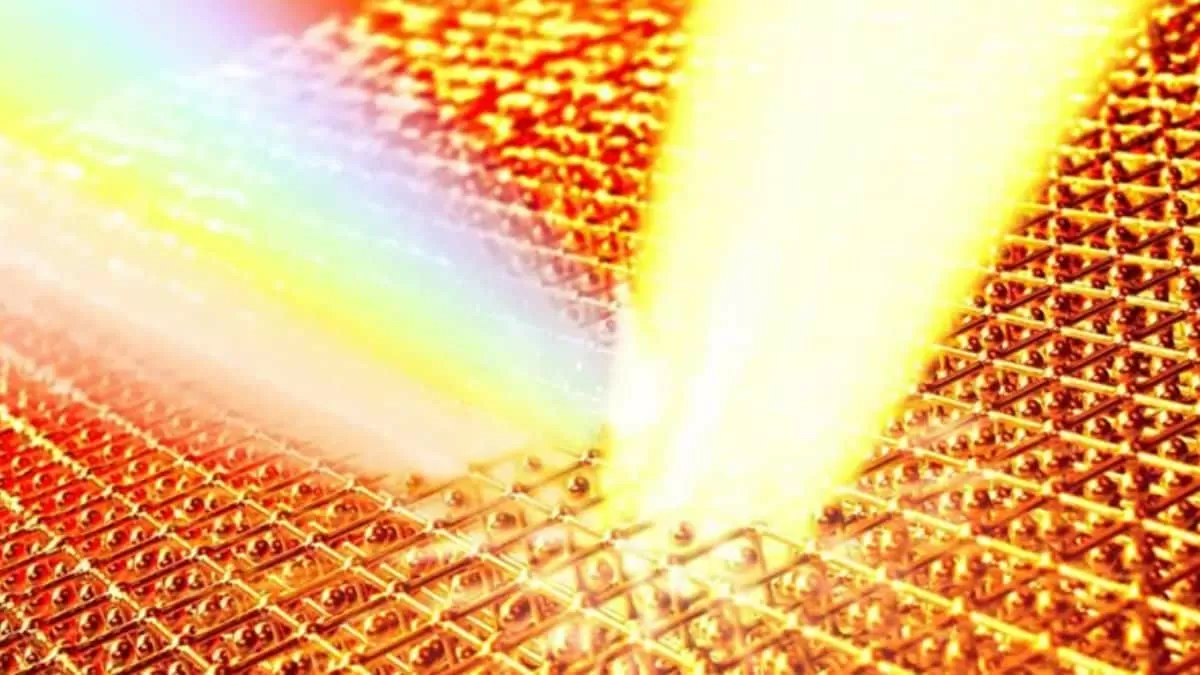Gold has always been considered a precious metal due to its rarity and beauty. But recent studies have revealed another remarkable property of this element – its ability to withstand extreme temperatures, surpassing its standard melting point by 14 times. This discovery has left scientists in awe and opened up a new realm of possibilities for understanding ultra-fast reactions and phenomena in high-energy environments.
The study, conducted by a team of international researchers, has shed light on the phenomenon of superheating, where a substance remains solid even under temperatures that are way beyond its standard melting point. This phenomenon has been observed in various materials, but the fact that gold, a relatively inert and stable metal, can exhibit such behavior has amazed scientists and challenged conventional physics.
For years, it was believed that when a solid substance is heated to its melting point, it immediately turns into a liquid. However, this study has shown that in the case of gold, the process is not so straightforward. By using ultrafast laser pulses, the researchers were able to heat gold samples to temperatures of around 5000 degrees Celsius, far exceeding its melting point of 1064 degrees Celsius. To their surprise, the gold remained solid even at these extreme temperatures.
So, what makes gold so special? The answer lies in its electronic structure. Gold has a very high number of electrons compared to other elements, and these electrons are tightly bound to the atomic nucleus. This makes it extremely difficult for the electrons to absorb energy and break free from their positions, resulting in the metal remaining in its solid state.
This groundbreaking discovery has far-reaching implications, especially in understanding ultra-fast reactions in high-energy environments like supernovae, where temperatures can reach millions of degrees. Until now, conventional physics has struggled to explain how materials can withstand such extreme temperatures without melting. With this study, we now have a better understanding of superheating and its role in these energetic events.
But the implications of this study go beyond just astrophysics. It could also have applications in materials science and engineering. Superheating can potentially be harnessed to develop new materials that can withstand higher temperatures without melting or breaking down. This could revolutionize industries that require materials to operate in extreme conditions, such as aerospace and nuclear power.
Moreover, this study highlights the importance of international collaborations in advancing scientific research. The team of researchers from various countries, including the US, Switzerland, and Germany, worked together to achieve these groundbreaking results. This cross-border collaboration not only brought together the expertise of different scientists but also allowed for the use of state-of-the-art equipment and facilities, resulting in a more comprehensive and accurate study.
As the world continues to face challenges in energy production and exploration of outer space, the need for a deeper understanding of materials and their behavior under extreme conditions becomes more crucial. The discovery of superheating in gold has opened up a new avenue of research that could lead to significant advancements in various fields.
In conclusion, gold has once again proven its worth as a remarkable element, not just for its beauty and value, but also for its extraordinary properties. The study on superheating in gold has shown that there is still much to be discovered and understood about the universe and the materials that make it up. With continued research and collaboration, we can unlock more mysteries and pave the way for groundbreaking advancements in science and technology.

